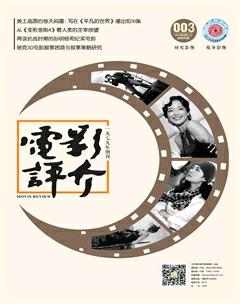《黄帝内经》翻译实例研究
李 阳
《黄帝内经》(以下简称《内经》)是《素问》与《灵枢》之合称,为我国现存最早之医学典籍,反映了我国古代的医学成就,奠定了我国医学发展的基础,成为我国医药之祖,医家之宗。其思想发乎于远古,体系形成于春秋,编撰成书于秦汉,其语言之精美、理论之精深、思想之精湛、论述之精练,堪与三坟五典相媲美。斯书之问世,奠定了华夏医药的理论基础和实践规范,数千年来一直被奉为医药圭臬、养生宝典,至今仍然指导着中华医药的学术研究和临床治疗。本文从通假字、古今字的辨析与翻译,词义的辨析与翻译,修辞与翻译几个方面的进行分析研究。
一、通假字、古今字的辨析与翻译
(一)高梁之变,足生大丁。(生气通天论)
英译:Overeating the fat meat and fine grain can cause the occurrence of abscesses.
说明:高,通“膏”;梁,通“粱”。“膏粱”就是肥肉精米。“足”有“能”意。“丁”似为“且”(与疽同)之讹字。“丁”“且”古文形近致误。膏粱之害,所以能生大疽,是因厚味郁为内热,发于肌肉,毒深则为痈为疽。《扁鹊心书》卷上引“丁”作“疽”。其书虽伪,此点却甚可取。[1]无论从文理还是医理来看,膏粱之变所生均应为“痈疽”,而非“疔疮”。
(二)经言盛者写之,虚者补之,余锡以方士,而方士用之,尚未能十全。(至真要大论)
英译:Medical classics stated that excessive pattern should be reduced,and deficient pattern should be supplemented.I have instructed the physicians with these principles but they cannot obtain a satisfactory result.
说明:“写—泻”为古今字;锡,通“赐”。
(三)四支解堕,此脾精之不行也。(示从容论)
英译:Slackness and weakness of the extremities is caused by the inability of the spleen to spread the essence.
说明:“解—懈”为古今字。脾精之不行,即脾不散精。
(四)阴阳者,万物之能始也。(阴阳应象大论)
英译:Yin and yang are the origin of all things.
说明:孙诒让《札迻》:“能者,胎之借字。”《尔雅· 释诂》:“胎,始也。”
二、词义的辨析与翻译
(一)言语环境制约法辨别词义与翻译
黄帝问曰:“人身非常温也,非常热也,为之热而烦满者,何也?”岐伯对曰:“阴气少而阳气胜,故热而烦满也。”(帝曰:“人身非衣寒也,中非有寒气也,寒从中生者何?”岐伯曰:“是人多痹气也,阳气少阴气多,故身寒如从水中出。”)(逆调论)
Huang-Di asked:When one has fever and feels vexed and oppressed but not owing to the wearing of warm clothes,what is the reason?
Qi Bo answered:It is due to deficiency of yin qi and overabundance of yang qi.
(二)依据对举结构辨析词义与翻译
邪气盛则实,精气夺则虚。(通评虚实论)
英译:Disease patterns caused by overabundant pathogenic factors are excessive,while those caused by damaged healthy qi are deficient.
说明:夺,今义多作“争夺”解,但用于句中,则义不相协。此当作“失”解,与“盛”反义对举。《说文·奞部》:“奪,手持奞失之也。”段玉裁注:“引申为凡失去物之称。”[2]
三、修辞与翻译
(一)比喻与翻译
阳气者,若天与日,失其所则折寿而不彰。(生气通天论)
英译:Yang qi in the human body is just like the sun in the sky.When the sun fails to move normally,all things cannot exist;and when yang qi fails to move normally,the man cannot grow and will die early.
说明:楼英:“人之阳气犹天之日光,人失阳气,而知觉运动视听言嗅之灵明。坏不彰、寿命易折,犹天之失光明,则万物无以发生也。”彰,同“章”。《匡谬正俗·六》:“古谓大木为章。”引申“章”有长大之意。折寿而不彰,意为人易致夭折,而不能生长壮大。[3]
(二)错综、词义的识别与翻译
刺针必肃,刺肿必摇,经刺勿摇。此刺之道也。(诊要经终论)
英译:In pricking,the needle should be inserted quickly;when treating swelling,the needle should be waggled to remove the pathogenic factors;when pricking the meridians,waggling method is not necessary.These are the essentials of acupuncture.
说明:“经刺”,较费解,但对照上文之“刺针”“刺肿”,可知“经刺”即“刺经”。此为交错语序。
(三)互备、句意的理解与翻译
五藏有俞,六府有合。(痹论)
英译:All the viscera have shu-stream and he-sea points.
说明:该句前有“五藏皆有合”、“六府亦各有俞”句,可知此句应正确理解为:五藏六府皆有俞合。张介宾在《类经》卷十七《痹证》中指出:“五藏有俞,六府有合,乃兼藏府而互言也。”意即本句使用了互备这一修辞手法。
(四)举隅、句意的理解与翻译
冬则闭塞。闭塞者,用药而少针石也。(通评虚实论)
英译:Winter is the season of shutting.When treating diseases in this season,practitioners should prescribe more medicinals and apply less acupuncture.
说明:“用药而少针石”意为多用药而少用针石。举下文“少针石”,见上文“用药”当为多用药的意思(举此见彼)。因为冬时之气闭藏于体内,而针石宜治外,汤药善治内,故云。
结语
《内经》虽然成书于秦汉之际,但其修辞手法不但至善至美,而且灵活多样,丰富和发展了我国古代修辞学。限于篇幅,这里仅举数例以示其貌。虽然这些修辞手法在目前的翻译实践中还无法一一化转到译文之中,但对其系统而深入的了解,有利于我们完整准确地掌握《内经》的语言特点和行文风格,从而更好地理解其实际内涵并将其以较为贴切的方式传达到译文之中。
——辨析“凌乱、混乱、胡乱、忙乱”

